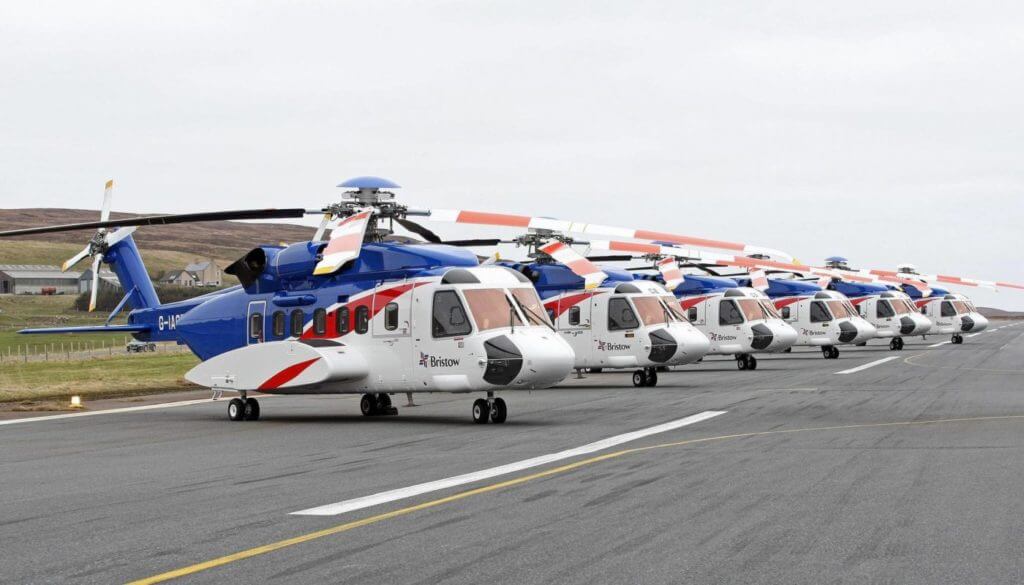Bristow Group Inc. on Feb. 19 announced that it continues to work towards filing its quarterly report on Form 10-Q for the period ended Dec. 31, 2018 as soon as possible. The company does not intend to comment further until the Form 10-Q has been filed.

The company is not yet able to file the Form 10-Q because additional time is required for the company to complete a review of its existing processes and controls to ensure compliance with non-financial covenants within certain secured financing and helicopter lease agreements. At this time, the company is not aware of any non-compliance with the non-financial covenants in its secured financing and helicopter lease agreements that has not been waived or previously cured, other than non-compliance resulting from the failure to timely file the Form 10-Q. The company has not detected any indications of accounting irregularities or impropriety in this process.
The determination of the existence of a control deficiency related to these matters, which has been classified as a material weakness in the company’s internal controls over financial reporting, and the need to assess possible non-compliance with all non-financial covenants commenced when the company’s senior management became aware that certain pledged and leased helicopter engines were not matched to specific pledged or leased helicopter airframes or returned to such airframes within specified periods, as is required under certain of the secured financing and helicopter lease agreements.
The removal and replacement of engines and components from helicopters is part of the company’s normal ongoing maintenance activities; however, since certain of those helicopter engines and airframes are pledged to lenders or leased from lessors, the removal of a pledged or leased engine from a pledged or leased airframe can create issues of non-compliance with certain of the secured financing and helicopter lease agreements. All issues related to this matter were cured prior to Dec. 31, 2018 for all but nine helicopter engines (relating to three agreements) where the pledged or leased engines were not returned to the pledged or leased airframes within specified periods due to delays with certain of the company’s maintenance service providers. The company has obtained waivers of such non-compliance under the applicable agreements related to such helicopter engines. The issues detected, which have all been cured or waived, involve a small subset of the approximately 385 helicopter engines that are subject to the company’s secured financings or helicopter leases.
The material weakness and the matters the company is continuing to assess for their impact on the company’s balance sheet classification of debt balances and related disclosures are limited to possible non-compliance with non-financial covenants.
The completion of the foregoing assessment is required in order for the company to develop a remediation plan related to the control deficiency in this area, and for the company and its auditors to determine the company’s compliance with non-financial covenants under these agreements as of Dec. 31, 2018 and in prior periods.
As a result of these issues, unless certain actions are taken, accounting rules may require the company to reclassify certain debt balances from long-term to short-term. These actions may include obtaining waivers from the company’s secured equipment financing lenders and helicopter lessors for potential non-compliance with non-financial covenants that may have existed prior to Dec. 31, 2018 or obtaining waivers for any specific instances of non-compliance with non-financial covenants that existed as of Dec. 31, 2018.
The company’s failure to file the Form 10-Q timely would, if the Form 10-Q is not filed prior to the expiration of applicable grace periods, result in an event of default under certain of the company’s financing and lease agreements, unless waived or extended.
The classification of certain debt balances as short-term as of Dec. 31, 2018, or for prior periods, likely would result in the company’s determination that there is a requirement to include disclosure about the company’s ability to continue as a going concern in the Form 10-Q and applicable prior filings. In order to avoid a breach of covenants in the company’s secured equipment financings that require delivery of annual audited financial statements without any going concern explanation or limitation, the company would need to seek waivers from its secured equipment financing lenders if such going concern disclosure determination is made with respect to the Form 10-K previously filed for the fiscal year ended March 31, 2018.
Further discussion of the material weakness and any financial statement implications, including any related revisions to the company’s previously issued financial statements, if required, will be included in the Form 10-Q and in amendments to prior filings, where required.
The company expects to receive a notice from the New York Stock Exchange (NYSE) that it is not in compliance with Section 802.01E of the NYSE Listed Company Manual due to the delay in filing its quarterly report on Form 10-Q for the period ended Dec. 31, 2018. The NYSE routinely issues such notices in such situations. The company expects that it will regain compliance with the NYSE listing standards upon filing the Form 10-Q, and is working towards filing the Form 10-Q as soon as possible.










In my 20+ years of experience as both an Aviation Insurance Assessor and Aircraft Valuer – that may operating companies of both rotary and fixed wing aircraft fail to keep proper control of leased or “loaner” components on Aircraft. This resulted in horrendous consequences / costs on lease return of all types of aircraft. In valuations “great care had to be taken in checking for status of leased components. I had occasion where a large UK Valuer challenged my value on a turboprop commutor fleet saying it was millions of dollars below value. They had missed the fact that all the engines involved were in default of their “Power by the hour” payments due to lack of effective control. Any large company needs a separate department dedicated to compliance with lease agreements and monitoring of any changes to an aircraft status in that respect.